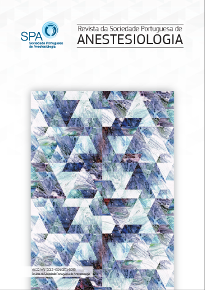The surgical patient prophylaxis of venous thromboembolism
DOI:
https://doi.org/10.25751/rspa.3544Keywords:
Prophylaxis, Venous Thromboembolism, Risk factors, Anesthesia, RecommendationsAbstract
Anesthesiology’s role of a multidisciplinary responsibility
The effectiveness of prophylaxis of venous thromboembolism in surgical patients is demonstrated and has great economic and epidemiological impact.
The features and indications in terms of prophylactic therapy should take into account the specific risk factors of the patient, those inherent to the surgery and related to anesthesia itself.
Despite the obvious contribution to improving the prognosis, the recommendations of venous thromboembolism prophylaxis in surgical patient is still not fully implemented in hospitals. This relates to various barriers since the lack of recommendations and the difficulty of assessing different degrees of risk and additional risk populations, the fear associated complications, to the still not integrated multidisciplinary responsibility. Furthermore there’s a need to reinforce the importance of execution and registration of process control. The regulators have already implemented programs in order to overcome these barriers, but we are far from a level of excellence across the entire surgical patient.
The purpose of this article is to present the latest recommendations for the prevention of venous thromboembolism in surgical patient, including the ninth consensus of the American College of Chest Physicians and the implications for anesthetic management, seeking strategies to overcome some of the barriers to their implementation.
Downloads
Downloads
How to Cite
Issue
Section
License
Articles are freely available to be read, downloaded and shared from the time of publication.
The RSPA reserves the right to commercialize the article as an integral part of the journal (in the preparation of reprints, for example). The author should accompany the submission letter with a declaration of copyright transfer for commercial purposes.
Articles are published under the terms of the Creative Commons Attribution Non-Commercial License (CC BY-NC).
After publication in RSPA, authors are allowed to make their articles available in repositories of their home institutions, as long as they always mention where they were published.


